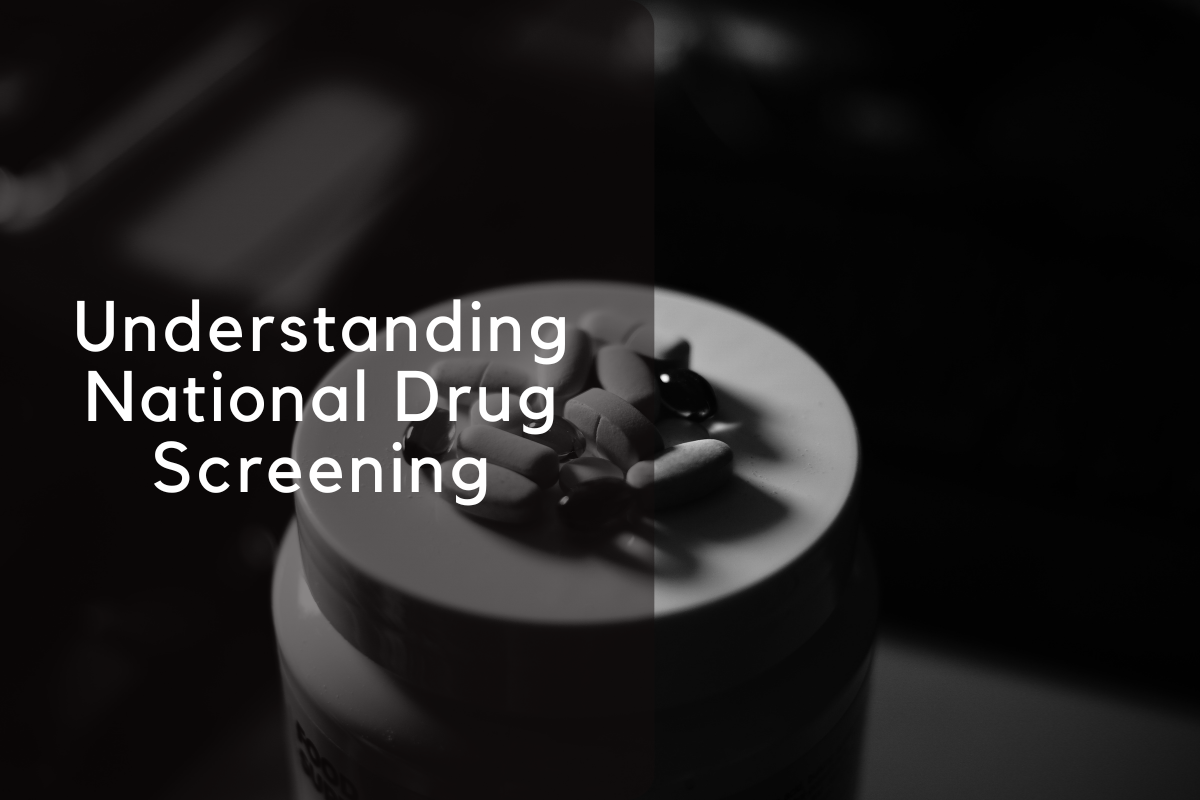
Understanding National Drug Screening: What It Is and Why It Matters
National drug screening plays a pivotal role in maintaining safety, compliance, and productivity in various industries. Whether you’re a business owner, a job applicant, or a concerned individual, understanding national drug screening is essential. This section will define national drug screening, explain its importance, and explore the types of tests and industries where it is required.
What is National Drug Screening?
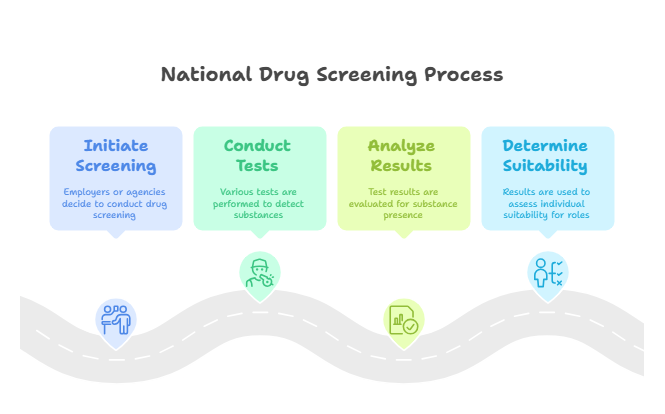
National drug screening refers to the process of testing individuals for the presence of illegal drugs, prescription medication misuse, or alcohol in their system. This process is commonly used by employers, regulatory agencies, and law enforcement to ensure that individuals comply with safety standards and legal requirements. National drug screening typically involves a series of tests conducted to check for specific substances, and the results are used to determine an individual’s suitability for a particular role or activity.
Why is National Drug Screening Important?
The importance of national drug screening cannot be overstated. It serves multiple purposes, including:
- Workplace Safety: In safety-sensitive industries such as transportation, construction, and healthcare, ensuring that employees are drug-free is crucial to preventing accidents and ensuring overall safety.
- Compliance with Legal Requirements: Certain industries are required by law to conduct drug screenings to comply with federal regulations, such as the Department of Transportation (DOT) for drivers and other safety-critical employees.
- Protection of Business Interests: Employers use drug screening to minimize risks associated with employee performance, absenteeism, and legal liability.
- Promoting a Drug-Free Environment: Implementing national drug screening policies helps to foster a workplace culture of productivity, accountability, and well-being.
Types of Drug Tests in National Drug Screening
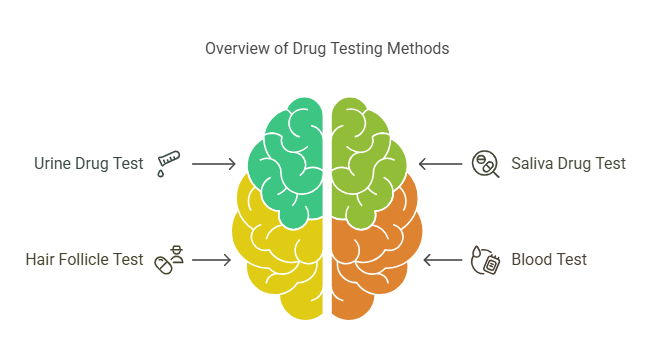
National drug screenings can involve a variety of test methods, each of which offers distinct advantages. Here are some of the most commonly used types of drug tests:
- Urine Drug Test: The most common and widely accepted form of drug screening. It can detect substances like marijuana, cocaine, opioids, and amphetamines.
- Saliva Drug Test: A quick, non-invasive option that detects recent drug use. It is ideal for workplaces that require immediate results.
- Hair Follicle Test: This test can detect drug use over a longer period (up to 90 days) and is often used for pre-employment or random testing.
- Blood Test: Although less common due to its invasive nature, a blood test is highly accurate and used to detect recent drug or alcohol use.
Drugs Tested in National Drug Screenings
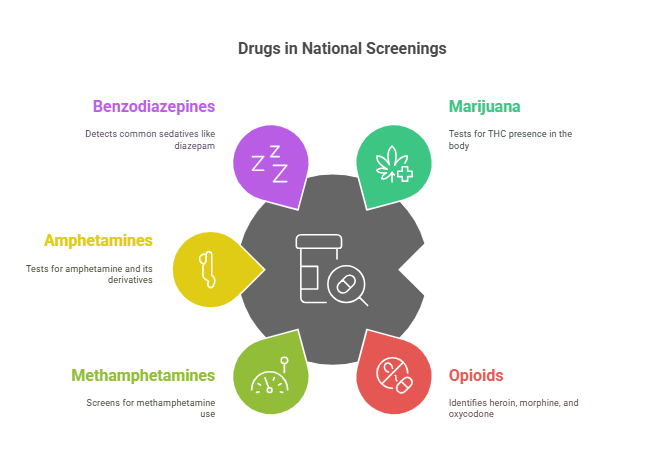
National drug screenings are typically designed to test for specific substances that could affect an individual’s ability to perform their job or pose a safety risk. Common drugs tested include:
- Marijuana (THC)
- Cocaine
- Opioids (Heroin, Morphine, Oxycodone, etc.)
- Methamphetamines
- Amphetamines
- Benzodiazepines
- Barbiturates
- Phencyclidine (PCP)
Some screenings may also test for alcohol, synthetic drugs, or other specific substances, depending on the industry or purpose of the test.
Who Requires National Drug Screening?
Various industries and organizations require national drug screenings to ensure workplace safety, compliance, and employee health. These include:
- Transportation: The Federal Motor Carrier Safety Administration (FMCSA) and the Department of Transportation (DOT) require drug screenings for commercial drivers and other transportation workers.
- Healthcare: Many healthcare employers require drug screenings to ensure that employees are fit for duty, particularly those working with patients or in environments requiring high levels of responsibility.
- Construction: Construction companies often mandate drug screenings due to the physical demands of the job and the risk of accidents.
- Government Agencies: Government contractors and employees may be required to undergo drug screening as part of their security clearance or compliance protocols.
In addition to these sectors, national drug screenings may also be required for law enforcement, military personnel, and those in sensitive or high-risk positions.
The Process of National Drug Screening: What to Expect and How It Works
The national drug screening process involves several steps from initial consent to final results. Understanding how the process works can help employers, job seekers, and employees navigate it smoothly and ensure compliance. This section will break down the key stages of the national drug screening process, discuss how long the screening typically takes, and provide insight into how services like www.rapidhiresolutions.com can help streamline the process.
Step-by-Step Guide to National Drug Screening
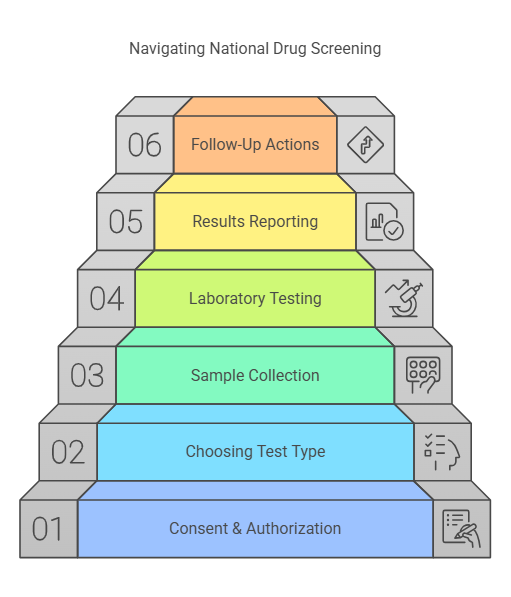
- Consent and Authorization: The first step in the national drug screening process is obtaining the individual’s consent. Employers or organizations will usually request written authorization from the employee or applicant, allowing them to conduct the screening. This consent ensures that the process is legal and that the individual is aware that the screening will be carried out.
- Choosing the Type of Test: Once consent is given, the type of drug test to be performed is determined. The most common tests are urine, saliva, and hair follicle tests, but in certain cases, blood tests may also be conducted. The selection of the test will depend on factors like the industry, the purpose of the screening (e.g., pre-employment, random, or post-accident), and the substances being tested.
- Collection of Samples: The collection of samples typically takes place at a certified testing facility or onsite, depending on the employer’s policies. For urine tests, employees or applicants will provide a sample in a private restroom under supervision to ensure the integrity of the sample. Saliva and hair follicle tests are non-invasive and can be conducted in a more straightforward manner.
- Laboratory Testing: After the sample is collected, it is sent to a certified laboratory for analysis. The laboratory tests the sample for the presence of various drugs, following strict guidelines to ensure accuracy. For urine tests, the results can typically detect substances that have been used within the past few days or weeks. Saliva tests provide more immediate results, and hair follicle tests can detect drug use over a longer period.
- Results Reporting: After the sample is analyzed, the results are typically reported back to the employer or organization requesting the screening. The report will specify whether the individual tested positive or negative for any substances. In cases of positive results, further confirmation tests may be conducted to ensure accuracy. Depending on the industry, additional steps such as counseling or rehabilitation may follow.
- Follow-Up Actions: If an individual tests positive for drugs, follow-up actions will vary depending on the employer’s policies or regulatory requirements. For some industries, such as transportation, a failed drug test may result in termination or suspension. In other cases, the individual may be required to undergo a rehabilitation program before being allowed to return to work.
How Long Does the National Drug Screening Process Take?
The time it takes for a national drug screening to be completed depends on several factors, including the type of test, the laboratory’s processing speed, and the method of communication used for reporting results. Below is an estimated timeline for each stage of the process:
| Stage | Estimated Time |
|---|---|
| Consent and Authorization | A few minutes to complete forms |
| Sample Collection | 15-30 minutes |
| Laboratory Testing | 1-3 business days |
| Results Reporting | 1-2 business days after testing |
| Final Confirmation (if needed) | Additional 1-2 business days |
In general, most national drug screenings are completed within 3-5 business days. However, expedited services are available for employers or individuals who require faster results.
The Role of www.rapidhiresolutions.com in National Drug Screening
Services like www.rapidhiresolutions.com can expedite the process of national drug screening. With a streamlined process and a network of certified testing facilities, they can help employers and employees navigate the complexities of drug testing. Whether you are conducting routine screenings for your workforce or need to complete a pre-employment drug test, their services ensure that results are delivered quickly and efficiently, with compliance to industry standards.
By utilizing professional services like those offered by www.rapidhiresolutions.com, employers can save time and reduce the administrative burden associated with the drug screening process. Furthermore, they provide easy access to online reports, allowing employers to quickly review results and make decisions.
Key Steps in the National Drug Screening Process
Here’s a summary of the steps involved in national drug screening:
| Step | What to Expect |
|---|---|
| Consent and Authorization | Sign consent forms allowing the employer or organization to conduct the test. |
| Selection of Test Type | Choose the appropriate test (urine, saliva, hair follicle, etc.). |
| Sample Collection | Provide a sample in a certified facility under supervision. |
| Laboratory Testing | Lab analyzes the sample for drugs or alcohol, following strict standards. |
| Results Reporting | Results are sent to the employer or organization for review. |
| Follow-Up Actions | If positive, take appropriate follow-up action based on the results. |
This streamlined process helps ensure that employers can quickly and accurately assess drug use and maintain a safe and productive workplace.
Common Questions, Issues, and Conclusion on National Drug Screening
National drug screening plays a crucial role in ensuring workplace safety, legal compliance, and maintaining a drug-free environment. However, like any process, there are often questions, potential issues, and concerns about how the screening is conducted and what steps to take if something goes wrong. This section will address frequently asked questions, highlight common challenges, and conclude with insights on the importance of using reliable services for an efficient and accurate screening process.
Frequently Asked Questions About National Drug Screening
How long does a drug screening take to process?
The processing time for national drug screening can vary depending on the type of test and the laboratory used. On average, results are available within 3-5 business days. For more urgent needs, expedited processing options may be available, which can provide results in as little as 1-2 days.
Can I speed up the background check process?
Yes, you can expedite the process by choosing faster testing methods or utilizing services that offer expedited processing. Companies like www.rapidhiresolutions.com often provide expedited results, helping to meet tight deadlines and reduce the wait time for employers and employees.
What drugs are typically tested in a national drug screening?
National drug screenings commonly test for a wide range of substances, including:
- Marijuana (THC)
- Cocaine
- Opioids (heroin, morphine, oxycodone, etc.)
- Amphetamines (methamphetamine, ecstasy, etc.)
- Benzodiazepines
- Barbiturates
The specific substances tested can vary depending on the employer's or industry’s requirements. For example, transportation industries may require tests for additional substances to ensure safety standards.
What should I do if I fail a national drug test?
If you fail a drug test, the next steps depend on the employer or regulatory requirements. In many cases, you will be given the opportunity to retake the test or go through a rehabilitation program. If you are applying for a job, a failed drug test may disqualify you from employment, depending on the company's policy.
Common Issues and Challenges in National Drug Screening
While national drug screening is crucial for maintaining safety and compliance, there are some potential issues that can arise during the process. Understanding these challenges can help employers and employees avoid delays and complications.
1. False Positives
A common issue in drug screening is false positives, where the test indicates the presence of a drug that wasn’t actually used. This can happen due to cross-reactivity with other substances (such as over-the-counter medications or certain foods). If this occurs, further testing such as confirmation tests (e.g., gas chromatography-mass spectrometry) can provide more accurate results.
2. Incomplete or Missing Information
Another issue that can delay the drug screening process is incomplete or missing information on the consent forms or sample collection documents. This can result in a longer processing time as the employer may need to contact the individual for clarification or additional information.
3. Sample Tampering or Substitution
In some rare cases, individuals may attempt to tamper with or substitute their samples to avoid detection of drug use. Certified testing facilities have measures in place to prevent this, including direct supervision and temperature checks on urine samples. However, it is important to be aware of this risk and the consequences it may have on the screening process.
4. Delays in Laboratory Processing
Delays in laboratory processing can occur due to a variety of reasons, such as a high volume of tests, missing samples, or technical issues at the lab. While most tests are processed within a few days, unforeseen delays can extend the waiting period for results.
Conclusion: The Importance of National Drug Screening and Reliable Services
National drug screening is an essential part of maintaining a safe, drug-free environment in many industries, including transportation, healthcare, and construction. It not only ensures the safety of the workplace but also protects employers from liability and ensures compliance with regulations. The process may seem complicated, but understanding how it works, what to expect, and the common issues that may arise can help mitigate delays and ensure a smoother experience.
By using trusted services like www.rapidhiresolutions.com, employers and individuals can streamline the national drug screening process, ensuring timely and accurate results while remaining compliant with industry standards. These services provide efficient solutions for both employers and job applicants, helping to minimize the challenges often associated with drug testing.
Ultimately, national drug screening is more than just a procedural step—it is a critical measure in safeguarding the workforce, ensuring the safety of the public, and maintaining legal and ethical standards within industries. Understanding the process, being prepared, and working with professional services can help make the screening process quicker and more reliable.
